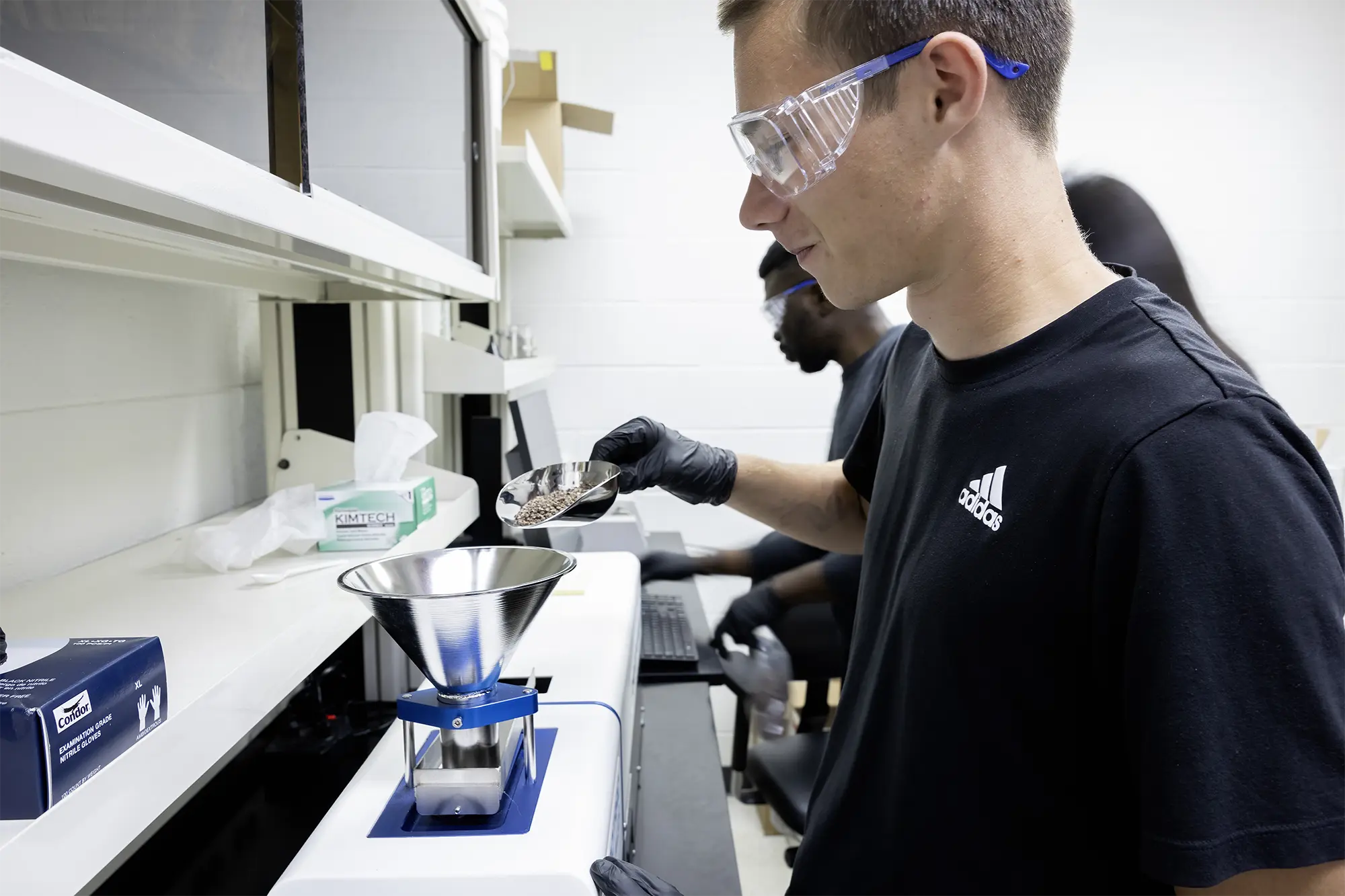
Aubrey Cornett of Hazard Independent School, Hazard, Ky., poses at the end of ASA
“Where I’m from, we don’t get a lot of STEM opportunities pertaining to engineering,” explained Aubrey Cornett, a rising 11th grader at Hazard Independent School in Hazard, Ky. “So, I jumped on [applying for this program] because it may be the only opportunity I get for the summer.”
Cornett’s circumstances are exactly why the Appalachian Regional Commission (ARC) exists. Since 1965, this entity of the federal government has invested with local, regional and state partners to strengthen the Appalachian region. ARC’s footprint spans 423 counties across 13 states including all of West Virginia and parts of Alabama, Georgia, Kentucky, Maryland, Mississippi, New York, North Carolina, Ohio, Pennsylvania, South Carolina, Tennessee and Virginia.
Historically, schools within this region have represented economically distressed communities where exposure to STEM research and opportunities is limited. One of ARC’s strategic investments is the Appalachian STEM Academy (ASA), which is hosted every summer by ORAU. It’s a program that serves as a gateway for students and teachers to find a future in science, technology, engineering and math.
The ASA application process is open to middle and high school students and teachers. Those who are selected participate in a fully funded two-week (one week for middle schoolers) residential research program in Oak Ridge, Tenn. The participants are paired with mentors from Oak Ridge National Laboratory, the University of Tennessee or Oak Ridge Institute for Science and Education. In 2024, the event was held July 6 – 19.
“I had actually never heard of Oak Ridge,” laughed River Moyer, a rising senior at Wellsboro Area High School in Wellsboro, Pa. “I got into looking at the facilities and research and all the equipment they have, and it excited me.” Moyer knows he wants to pursue science, but he isn’t sure what specifically. His mother is a STEM teacher and encouraged him to apply for ASA.

River Moyer of Wellsboro Area High School, Wellsboro, Pa., recalls when he first heard of ASA
Appalachian STEM Academy is a robust program that places participants with subject matter experts. The selected students and teachers are assigned a project and work in small teams with their mentors in preparation for an end-of-program presentation. Moyer’s assignment was focused on biochar.
“We got our projects, and I looked at the paper, and was like, ‘Shoot. I’ve gotta do some research on this. I’ve gotta see what this is all about.’ I did some research. I studied up on it, and I’m learning more and more about it. It’s pretty cool,” he said. “Basically, it burns off all the dead wood. We’re looking at which grasses and plants burn best and can be converted into the best biochar which is then used to put back into soils as carbon sequestration, which means storing carbon instead of letting it back into the atmosphere as greenhouse gases. It’s restored in the earth and is really good for the soil and helps plants grow.”

Moyer works with biochar for his assigned project
Cornett was assigned robotics because of her interest in engineering. “You have to have a general idea of electrical engineering to know how different machines work and how you can use them to help you study whatever it is you want to study,” she said. “We use robots all the time in our everyday life. It can be something as simple as a calculator, but it’s good to know how to use it.”

Cornett’s interest in engineering landed her a spot on the team researching robotics
Through this opportunity with ASA, Cornett is more confident about what she wants to pursue in the future. “I’ve learned that I do want to go into engineering for sure and that working in a lab would be really cool because there aren’t many labs around where I live. I didn’t really have a lot of lab experience.”
Moyer agrees that his decision to get to know more about Oak Ridge—and all that Appalachian STEM Academy offers—will set him up well for his last year of high school “When I first heard it was two weeks, I was like, ‘I don’t know.’ Because I’m an athlete. I play soccer, and I would miss a lot of my summer soccer sessions. I was worried about that, but I’d say it’s worth it,” he said. “Getting to put this on my resume is probably the highlight of all of this—getting to show off what I’ve worked on. What I’ve done.”
In addition to 45 high school students, ASA selected 52 middle school and 14 bridge students (that is, students who previously completed ASA but are not old enough to apply for the high school program) as well as four high school teachers. Each group had a full slate of activities on their schedule. Beyond the research work, networking opportunities and access to national labs, they had fun outings such as teambuilding challenges, a visit to the American Museum of Science and Energy and Dollywood. The fully funded program includes all the above plus room and board, meals and a complimentary laptop.

In addition to lab research, Appalachian STEM Academy includes teambuilding challenges
As the Appalachian STEM Academy wrapped up another year of impact, ARC’s mission to transform Appalachian communities, create jobs and strengthen the regional economy is one step closer to achievement because of the experience of these 115 people who will return to their homes invigorated with new STEM aspirations.

High school ASA participants gather for a group shot
